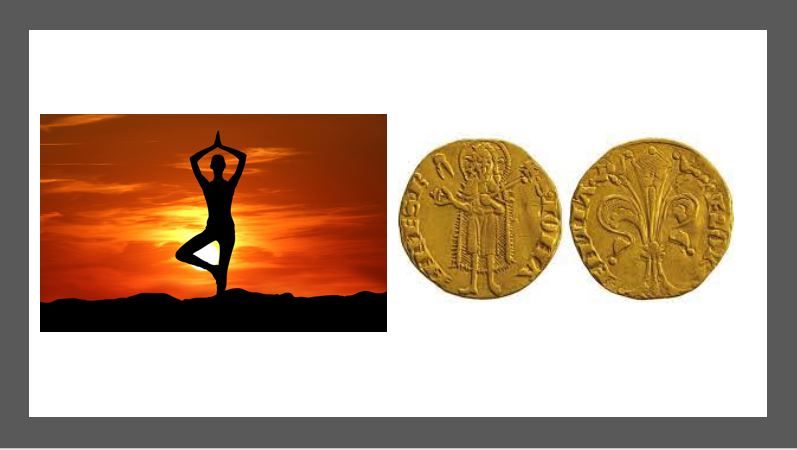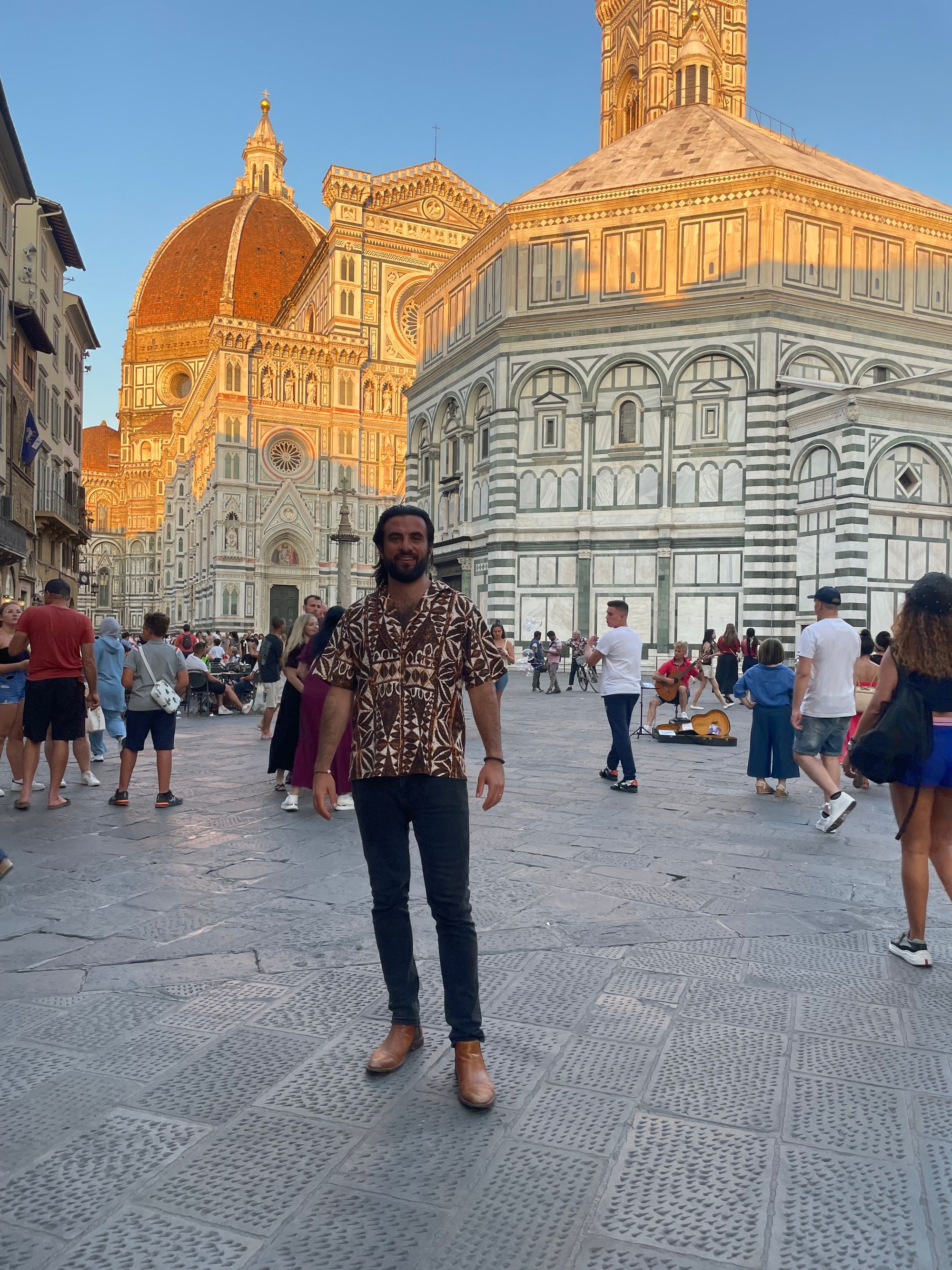Bitcoin and Yoga: Pathways to Individual Sovereignty (Part III)

Part III: Evolution of Yoga and Money
The history of money and yoga have both played out over several millennia. Humans are social beings who figured out that one could divide his labor to specialize and offer his goods or services in a barter system of exchange to acquire what one needed to live. The need for money arose out of the challenge of the coincidence of wants; for a trade to occur one needed to find another producing what he wanted to consume and have a good that the counterparty also desired. Humans figured that certain commodities or collectibles could serve this purpose and started using indirect exchange. There is evidence of different cultures around the world using salt, cattle, seashells and beads as money.
Monies competed against one another. Over time metals such as gold, silver and copper emerged as good monies due to certain properties of money.[i] Money is a tool of coordinating economic activity that evolves from a commodity to a store of value, a medium of exchange and finally unit of account. There are seven properties that make a sound money[ii]:
1. Scarcity – limited supply relative to other goods
2. Durability – repeated functional use.
3. Acceptability – used by others and easily verified/accepted.
4. Portability – moved across distances.
5. Divisibility – divided into smaller units.
6. Fungibility – one unit is exactly the same as another.
7. Immutability – cannot be changed without consensus among participants.
I highly recommend reading The Bitcoin Standard and The Fiat Standard by Saifedean Ammous, The 7th Property by Eric Yakes and Layered Money by Nik Bhatia to get a deeper understanding of the evolution of money from the early days, through the creation of central banks and the gold standard, to our fiat currency system today. We are not taught about money in school for a reason – it threatens the narrative that governments and central banks should control money creation. Have you ever asked the question to yourself - what is money?
The lessons of Ludwig von Mises and the Austrian school of economics were not mentioned throughout my study at a top economics program in the US. In August 1971, the US severed the convertibility of gold for the dollar, and ever since we have been in an increasingly disastrous fiat experiment, with sovereign governments running up hundreds of trillions of dollars of debt that they cannot possibly pay back without printing more money – leading to inflationary theft of people’s times, and inevitable hyperinflation.
The true nature of money is not questioned nor is the ethics of money production considered in everyday discourse – we take as given this insane monetary experiment of the past five decades, despite the degradation of morals and increasingly high time preference behavior. An excellent book by Jorg Guido Hulsmann called The Ethics of Money Production, interestingly published in August 2008, just two months before Satoshi released the bitcoin white paper. In it Jorg said it was unlikely that there would ever be a truly decentralized digital currency.
Fortunately, bitcoin represents the potential separation of money from state, just as church and state were separated 500 years ago. Bitcoin is perfect money – it is strong across all the properties of money. It is verifiably scarce. Jeff Booth says it best – when there is abundance in money, everything becomes scarce. When there is scarcity in money, everything becomes abundant. Bitcoin will unlock the value that technological advancements should be bringing the cost of goods and services down, improving living standards, as was accomplished over thousands of years that gold served as a neutral, sound money. Money converges to one - bitcoin has the potential to obsolete all other money. A better understanding of what money represents and how you play a role in the larger network can help you gain freedom and control over your own path.
Just as money has a deep history, yoga has stood the test of time while changing over the years. For many years of the Vedic period in the Indus valley around 4000-4500 years ago, the teachings of yoga were kept guarded and shared only amongst the elitist Brahmins. Their practices were expressed externally in a shamanic culture and passed down via oral transmission. In the pre-classical period around 900-500 BCE, the Upanishads viewed life cyclically and established teacher/student relationships, teaching about karma, that every action triggers a reaction, and in reincarnation, samsara. In the epic period around 500-200 BCE, the epic tales of Arjuna the warrior and Krishna the charioteer are featured in the 1.8 million-word Mahabharata, of which one chapter is the sacred Bhagavad Gita text. Yogic tradition and this text has also played an important role in the development of the Hindu religion, as well as Buddhism and Jainism.
Around 2000 years ago in the classical period, Patanjali brought more structure to the yogic traditions, laying out Ashtanga Yoga, or the eight limbs of yoga that lead to enlightenment. The path of yoga is part theory and part practice, designed to take you towards individual spiritual awakening, while providing moral guidelines for life. He wrote 196 yoga sutras or short lessons that serve as a basis for yogic philosophy.
The tantric period of 500 AD saw the development of a few more asanas, however the focus was on achieving inner peace, balance and acceptance through understanding of the chakras, the energetic centers in the body. From tantra, the hatha yoga system emerged in the 10th to 12thcenturies, which brings together ha (sun) and tha (moon) – a balance of masculine and feminine energy, yin and yang, analytical vs creative, leading to the print of the Hatha Yoga Pradipica text in the 14thcentury.
Under British rule, the teaching of yoga was clamped down on their in India during the 17th-19th centuries. Finally, around the turn of the 20th century yoga started being shared again, with several key figures playing a prominent role in sharing the teachings with the West, led by Sri Krishnamacharya. Yoga has been used to help heal individuals physical, emotional, and spiritual wounds, told eloquently by Sri’s son TKV Desikachar in his book The Heart of Yoga [iii]. Yoga also helps connect individuals together through shared practices energetically in a class setting, or by encouraging other on their own path and continuous improvement in a Mysore style Ashtanga practice. This very brief overview highlights how yoga developed over the centuries and contains many lessons that go way beyond the westernized version you may have seen in yoga studios today.
Likewise, money has gone through many periods of change as new philosophies and technologies were developed, networks formed and trade flourished during key periods. Evidence of gold and silver jewelry being used as money goes more than 12,000 years back. Previous metal coins emerged in Anatolia (modern Turkey) around 700 BCE. Ancient Greece used the Drachma with a dependable silver content, while the Byzantine empire went 800 years without insolvency of its Solidus coin, with strict laws against coin clipping and counterfeiting. The Roman government minted the denarii that was widely used across Europe, Asia and Africa around the 1st century AD. However, they debased the value of the currency by 98% over three centuries by coin clipping, reducing the metal content of the coins, distributing wealth from the people to the government, and contributed to the eventual decline of the empire. Paper money was first introduced in China in 900 AD.
In 1252 the Florentine mint created the Fiorino d’Oro, gold florin coin. The introduction of sound money, a currency that kept its weight in gold of 3.5 grams for nearly four centuries, enabled the Mediterranean region to flourish, with many structures built remain standing today that I have seen firsthand. Since the 15thcentury, the de-facto global reserve currency has shifted through the dominant economy of the time, chronologically from Portugal, Spain, Netherlands, France, Britain and now the US.

The US grip on global money post-world war two was originally pegged to gold, however since August 1971, fiat money has had no tether to sound money. We are experiencing the volatility of this boom and bust cycle recently with another banking crisis occurring in March 2023. Banks no longer need to serve as gatekeepers to financial services, like the knowledge of yoga initially held tightly by the Brahmins. Our experiments with money have led humans to discover and develop open source, verifiably scarce digital money that will have a profound effect on our society. Now that one has the power to preserve work and exchange it to another for value, this opens up a whole new world of freedoms for the individual.

In this brief overview of the history of yoga and money, you can see how these powerful tools played pivotal roles in civilizations around the world for thousands of years. The stories of how we got here is crucial in determining where we go next. The depth and truth in both subjects deserves study that I believe we can all benefit from and make use of in our day to day lives, both internally and interacting in energy exchange with others. As we dive deeper and transition into understanding the path of yoga and bitcoin, it will become more clear how embodying the lessons can lead one towards individual sovereignty.
[i] Boyapti, Vijay. The Bullish Case for Bitcoin. 2021.
[ii] Yakes, Eric. The 7th Property: Bitcoin and the Monetary Revolution. 2021.
[iii]Desikachar, TKV, The Heart of Yoga. 1995.